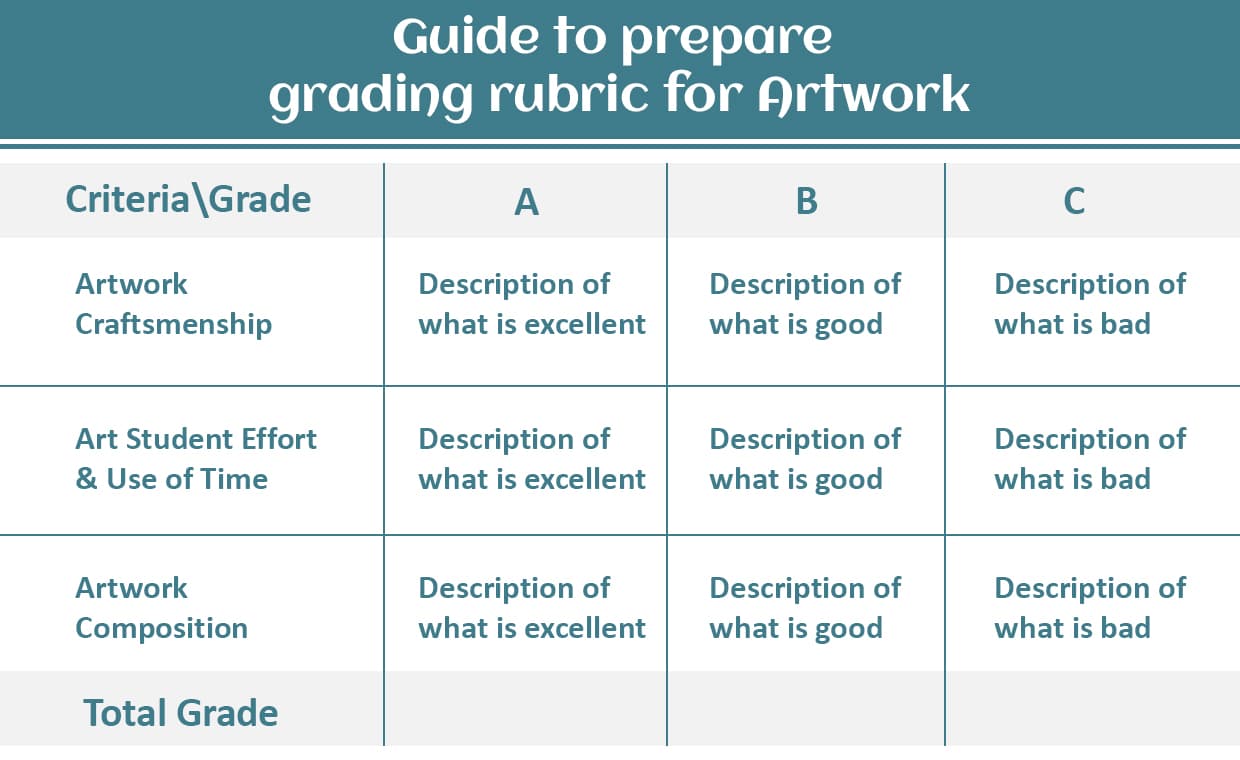
Even imagining how much homework students do can easily tire you. They are often overwhelmed by all the essays, tests, and readings they need to do every night. Unless they’re using an online papers writing service, art homework will be pushed aside for later. But there are some that thrive on creativity and want their artwork judged fairly.
Unlike maths tutoring, assessing artwork can be tough job, if there are no predetermined criteria for grading. Without a guideline, the task will be time consuming and also confusing. Rubric based assessment is the solution to this problem. To assess students’ artwork, rubric can be created. Rubric is a “scoring guide” used to evaluate students’ responses. Rubrics can be created for any subject.
Art grading rubric based on key art concepts can serve as objective assessment tools for art educators. Developing a structured assessment tool for art can pose a challenge for art educators. By looking at specific components of artwork though, an art teacher can easily assess most student works of art, by creating one’s own art grading rubric. Some services like an essay writer service provide teachers with art rubric handouts to help them assess students’ works.
Here is a simple guide to create your own art grading rubric, when doing rubric based assessment.
Elements to Create Art Grading Rubric
Keeping in mind the elements of the artwork, rubric’s criteria can be selected. Here are key elements for rubric based assessment of students’ artwork.
Artwork Craftsmanship
Appearance matters in art. Students must make sure that they pay attention to the craftsmanship, or the cleanliness and neatness of their work. A beautiful drawing on a crumpled piece of paper will not be as impressive as a beautiful drawing on a crisp clean piece of paper.
Every medium will have its own craftsmanship concerns. Ceramic items will need to have smooth bases and lips, whereas drawings will need to be free from smudges and wrinkles. Because of the differing craftsmanship standards, the art teacher should provide the students with a list of the craftsmanship criteria for each project before the students begin their work.

When grading craftsmanship, the teacher should base the grading on the criteria originally submitted to students. It may be helpful to create an art grading rubric, or grading guideline, that states what acceptable craftsmanship would be for each letter grade. For instance, an A would need to be completely free of any wrinkles or smudges, a B might have one or two wrinkles or smudges and a C would have three or four wrinkles or smudges. By assigning a quantitative craftsmanship measure, the teacher will give a fair and effective rubric based assessment of the student’s work.
Art Student Effort and Use of Time
In an art classroom, projects can take up a bulk of the time. If students are not putting in their full effort, their projects might fall short of their potential, or may not get done at all. Because of this, grading student effort and use of time is necessary for a portion of the overall project grade.
When establishing criteria for use of time and effort, teachers should let students know what is expected of them within the classroom and at home. For instance, the essay writers websites emphasize that the teacher might expect students to come in before the bell rings, get projects out and start working. The teacher might also stress the importance of coming to class with the necessary tools.

Teachers should also provide criteria for absences and submitting late work in the art grading rubric. Teachers should have policies to address the completion of projects when a student is repeatedly absent. These policies should be established before a specific instance arises with a student.
When grading student use of time and effort, the teacher may want to take a daily effort grade. The teacher can also qualitatively assess the student’s attitude and effort toward a particular project. As with craftsmanship though, a clear rubric that outlines the expectations for the different grades should be provided to the students before work begins on any project. This rubric should also be followed by the teacher when grading art projects.
Grading Artwork Composition
Artwork also must be graded based on its visual effectiveness. The art teacher must assess the student artwork based on the effective use of art elements and principles.
The criteria for the appropriate use of art elements and principles within a composition will be established by the art teacher and may vary from project to project. For many projects, it is important for the student to establish a focal point and use formal elements to direct the viewer’s eye to that focal point. For other projects, the teacher might establish a focus such as developing a harmonious color scheme.
The teacher must provide the students with his or her expectations for the composition of the artwork prior to the students beginning work on the project. The criteria must also be adhered to when grading art project. In this way, both students and the teacher are aware of the expectations for each project.

When grading composition, the teacher might find it beneficial to develop an art rubric that outlines how elements should be used to receive the grades A, B or C. For instance, a pro essay writing service offers the following grading: a pencil drawing rubric dealing with the element of value might state that to receive an A the student must show evidence of at least 6 different values appropriately used within the composition. This criteria must also be presented to the student before he or she begins the project.
Figuring the Total Grade
Finally, the teacher must merge the assessments of craftsmanship, effort and composition to come up with a total project grade.
First, the teacher must decide how he or she wants to weigh each assessment. Some teachers may value effort more than composition, while others might put more focus on the finished work than the daily effort of the students. As with any part of assessment though, the weighing of the categories must be apparent to the students before they start work on their projects.

When factoring the final grade, average the scores of each part of the art grading rubric to come up with an overall grade. For instance, if the student received an A in craftsmanship, a B in effort and a C in composition, he or she would receive a B for his or her overall grade. This kind of factoring is easy to do if the teacher assigns a numerical value for each grade that factors into the overall score. Then simply add up those scores and divide by the number of categories in which the student received a grade.
Summing up
Grading art projects can be made easy by designing your own art grading rubric. The article provides a guide to design rubric, when doing rubric based assessment.
Before you leave, make sure to read these articles,
Tips for Staircase Wall Decor: Hanging Arts!
Correctly Hang Artwork On Your Walls!






























